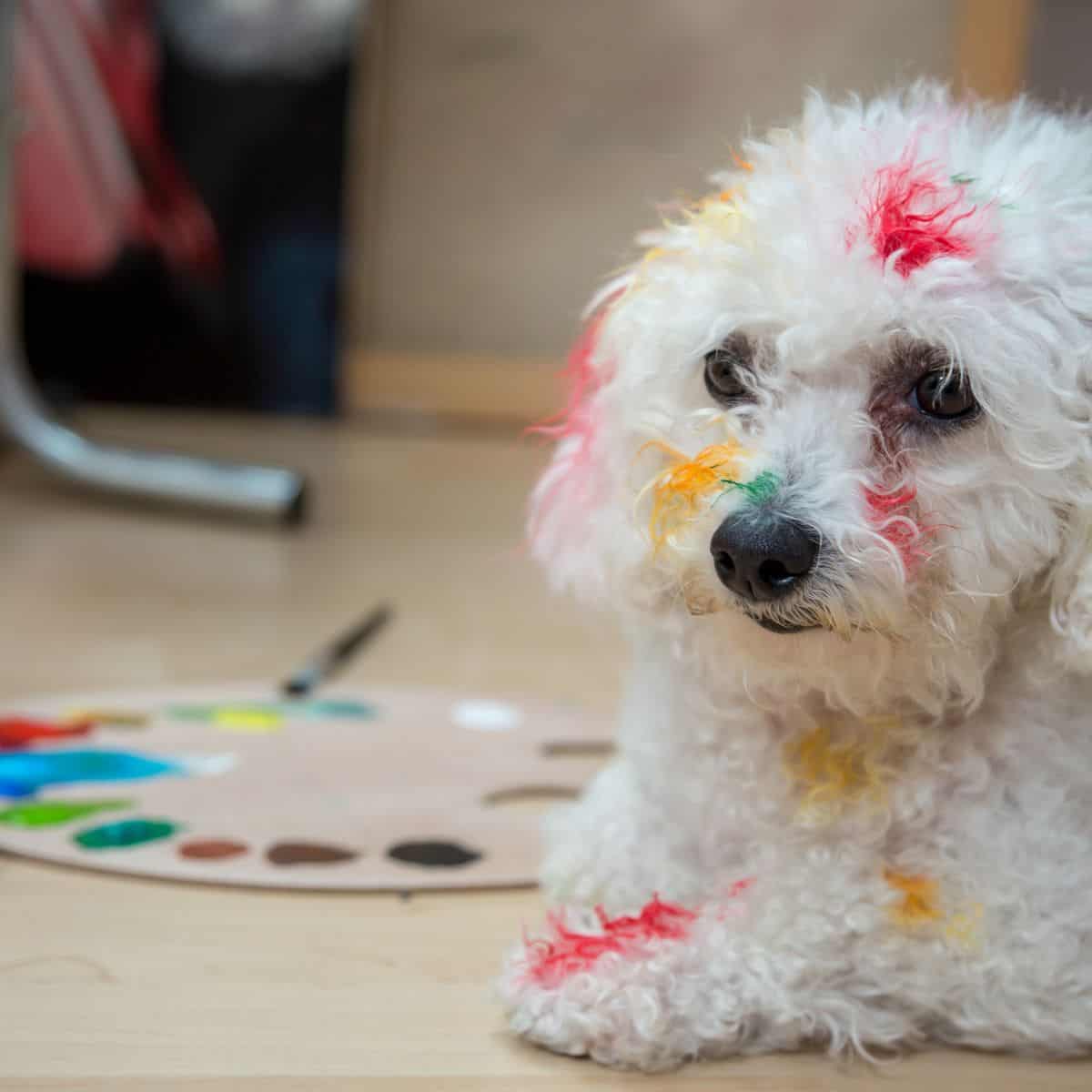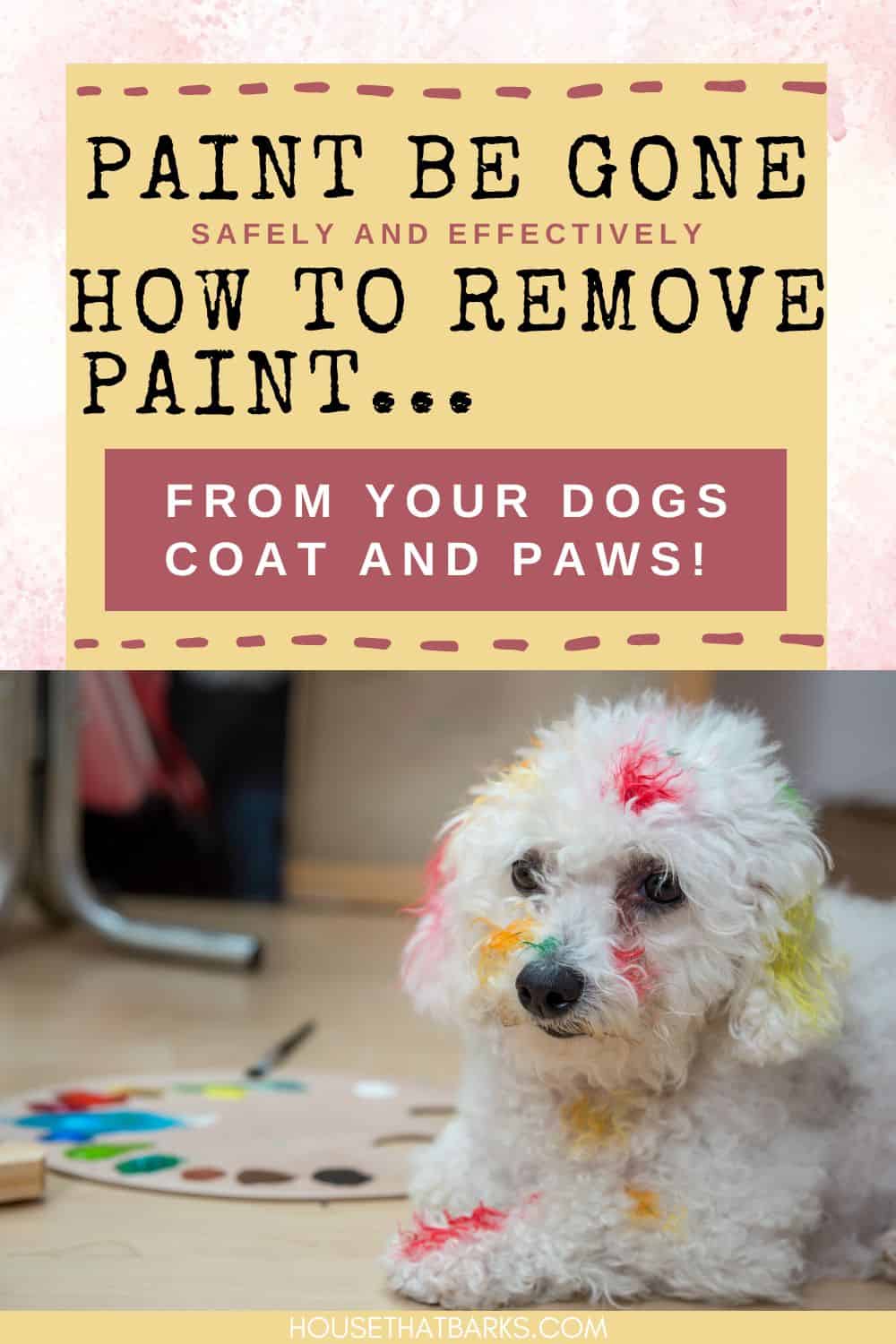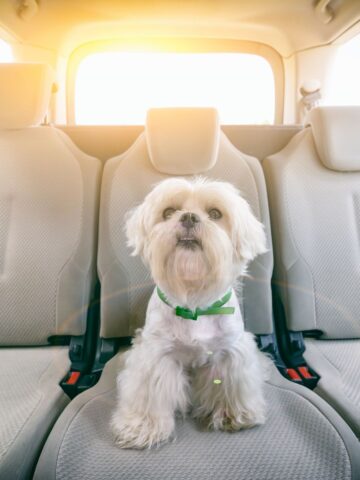Getting Paint off your dogs coat and paws is a multistep process.
Whether your adventurous pup got into some paint during a DIY project or encountered a messy situation, it's typical to worry about the safety and well-being of our furry companions, especially when they are covered in paint.
However, even with the utmost care, accidents happen, including spills and splatters of paint onto your dog's coat and paws.
While removing paint from your dog's fur and skin may seem like a daunting task, it's necessary for their overall health and comfort.
Leaving paint on your dog's coat or paws can irritate your dog's skin, and ingesting the paint during grooming can be harmful.
Fortunately, there are several ways you can safely remove the paint from your dog's coat or paws, with the right tools and techniques.
In this blog post, we will dive into various methods and tools that dog owners can us to safely remove paint from your dog's coats and paws.
From gentle detergents and natural remedies to professional grooming services, we'll cover a range of techniques to fit your preferences and level of comfort.

Brushing Loose Particles Paint off your Dogs Coat
One common issue dog owners face is getting paint on their dog's coat and paws.
In such scenarios, it's important to remove the paint as soon as possible to avoid any harm to your dog's skin.
Here are some steps you can take to remove paint off your dog's coat and paws.
- First, gently brush your dog's fur to remove any loose paint particles.
- Using a soft bristled brush avoid brushing too hard to prevent skin irritation.
This will also help prevent the paint from spreading to other areas of your dog's coat.
If the paint has already dried and hardened, you can use a brush to loosen it up and remove as much as possible. However, be cautious not to hurt your dog while brushing.
Soften the Paint with Lukewarm Water
- After brushing off the loose paint, the next step is to wet the area with lukewarm water.
This helps to loosen the paint and prevent it from spreading further.
It's important to use lukewarm water, as hot water can scaled your dog's skin and cold water may shock them, causing unnecessary stress.
Wetting the paint area can make it easier to identify the extent of the paint remove required.
Plus wetting the area prepares the affected area for the cleaning process.
If possible, it's best to use a gentle stream of water, like in a shower, or a faucet.
Disclosure: Some of the links in this article are affiliate links (Amazon Associate or other programs we take part in). As an Amazon Associate, I earn a small commission from qualifying purchases.
Rub a Small Amount of Detergent
To effectively remove paint off a dog's coat and paws, you'll want to use a mild detergent.
- Once you've wiped off and/or brushed off as much as paint as possible, apply a small amount of mild detergent to the affected area.
- Using the cloth, gently rub the detergent or dawn dish soap into the paint covered area.
- Rub carefully, avoiding irritating your dog's skin and avoiding your dog's eyes.
You may need to repeat this step several times, depending on the amount of paint on your dog's coat and paws.
Once the paint is removed, throughly rinse the area with water to make sure no traces of detergent or paint remain on your dog's coat or paws.
Use Shampoo and a Moisturizing Conditioner
After using the mild detergent it's important to go over your dog's coat with a quality dog shampoo and coat conditioner.
These shampoo and conditioners will help soften the coat and can be beneficial in treating a variety of paint on your dog's coat.
A good shampoo and moisturizing conditioner will help to replenish your dog's coat by penetrating deep into the skin and hair, leaving it looking and feeling healthy and shiny.
It will also help to eliminate that unpleasant smell of paint that may be trapped in their coat and paws.
- After shampooing, apply the moisturizing conditioner to your dog's coat and paws and leave it on for 3-5 minutes.
- After that throughly rising your dog with lukewarm water and then pat dry.
Throughly Rinsing
Once you've successfully removed the paint from your dog's coat and paws, it's essential to rinse the affected area throughly with lukewarm water.
This helps to remove any remaining residue and helps to keep your dog's skin clean and free from any harsh chemicals that could cause irritation or discomfort.
Be sure to dry your dog's coat and paws throughly with a clean towel to prevent any moisture accumulation that can lead to fungal and bacterial infections.
Regular maintenance of your dog's coat and paws can prevent the buildup of dirt and paint, making cleaning a much easier task in the future.
Dry the Area Completely
A lot of dog owners like to let their dogs dry out on their own. However, it's important to dry the area completely with a clean cloth.
Leaving any moisture on your dog's coat could lead to skin irritations of infections.
Use a soft and clean towel to pat dry the area where the paint had spilled.
Avoid using rubbing motions as this can cause skin irritation.
When to Consult a Veterinarian
If the paint on your dog's coat and paws does not come off easily or if you notice any adverse reactions, it may be time to consult a veterinarian.
While there are several methods to removing paint from a dog's coat and paws, some may be not be as effective.
A veterinarian can recommend safe, professional methods to removing paint and alleviate any discomfort your dog may be experiencing.
They can assess your dog's overall healthy and help on preventing similar issues in the future.
Final Thoughts on Removing Paint off Your Dog's Coat
In conclusion, it can be a stressful experience for both you and your furry friend when they accidentally get paint on their coat and paws.
However, by following the steps outlined in this blog post, you can safely and efficiently remove the paint and not cause any harm to your dog.
It's crucial to act quickly and avoid using any chemicals that could harm your dog.
Remember, patience is key, and with a bit of care and attention, you'll have your furry friends coat and paws look good as new in no time.
Pin It and Save It For Later







Leave a Reply